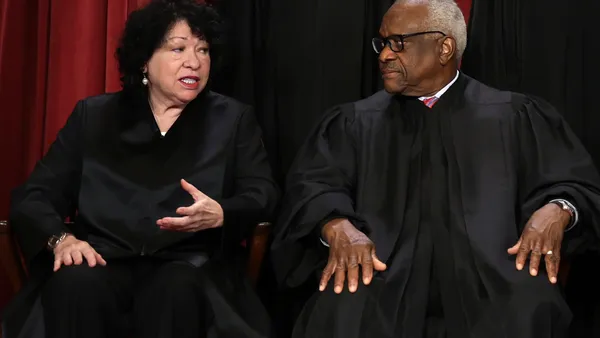Dive Brief:
- Enterprise Services, a spin-off of Hewlett Packard, prevailed on an IT employee’s Americans with Disabilities Act lawsuit because he couldn’t show his impairment – arthritis in his big toe – was a disability under the ADA, the Fourth U.S. Circuit Court of Appeals held Aug. 16 in Israelitt v. Enterprise Servicess, LLC.
- The employee worked remotely from his home outside Baltimore, according to court documents. He sought two accommodations: a hotel room for a Washington, D.C., conference so he wouldn’t have to drive back and forth and risk aggravating his arthritis, and a rental vehicle for a team-building trip that required walking, court records said. The company denied both requests. It also determined he wasn’t productive and had interpersonal problems, including during daily video calls, according to the record. His supervisor eventually issued him a 30-day final warning; the company said it fired him because his productivity didn’t improve.
- He sued Enterprise for discriminating against him because of his arthritic toe and for failing to accommodate the condition. A federal district court ruled for Enterprise; the Fourth Circuit upheld the ruling. The claims turned on whether the employee had a disability, as defined by the ADA, the Fourth Circuit explained. He failed to meet the standard; that is, he couldn’t show his arthritis had a substantial impact on his ability to walk. Instead, the impact was minor – he “walked at length – unassisted – for both business and pleasure,” the panel said.
Dive Insight:
The ADA prohibits employers from discriminating “on the basis of disability” and entitles qualified individuals with a disability to reasonable accommodation, absent undue hardship, according to guidance from the U.S. Equal Employment Opportunity Commission.
In ADA cases, the primary focus is on whether discrimination occurred, not on whether someone has a disability, the EEOC says. For this reason, courts will sometimes assume the plaintiff has a disability and concentrate on whether they were denied a reasonable accommodation or otherwise discriminated against in violation of the act.
The Fourth Circuit, which covers Maryland, Virginia, West Virginia and North and South Carolina, didn’t go that way because it found the record was clear the employee didn’t meet the definition of disability. “He offered no evidence of medical care ... for over a decade. And he did not use any assistive device to walk. To the contrary, he walked unassisted for exercise several times a week, up to 30 to 45 minutes each time,” the court noted.
For HR professionals, one recommended approach is simple and straightforward, an expert previously told HR Dive: Train supervisors to respond with five “magic” words – “How can I help you?” – when an employee indicates an accommodation is needed.
This approach ensures even the most complex situations start out legally sound, the expert explained.
Some situations can be easily resolved, he said. If not, such as when the disability and/or need for accommodation isn’t obvious, the employer may ask an employee for reasonable documentation about their disability and functional limitations, the EEOC guidance points out.
Supervisors should also be trained to document all interactions with the employee, starting with what the employee said and how the supervisor responded, the expert added. Documentation is key to another sticky compliance issue: Having to discipline an employee who engaged in a protected activity, such as asking for an accommodation.
Although employment anti-discrimination laws prohibit retaliation based on a protected activity, the laws don’t excuse employees from neglecting job duties, violating rules or doing anything else that would otherwise result in consequences for poor performance evaluations or misconduct, the EEOC emphasizes.
However, before taking disciplinary action, it’s important for employers to have a clear record of facts that justify the action, other experts have noted. Here, the IT employee claimed he was fired because he asked for accommodations. The Fourth Circuit said the record proved otherwise. “The evidence unequivocally showed [he] was terminated because he was an incompatible teammate who failed to make any meaningful progress on tasks that were assigned to him,” it held.












